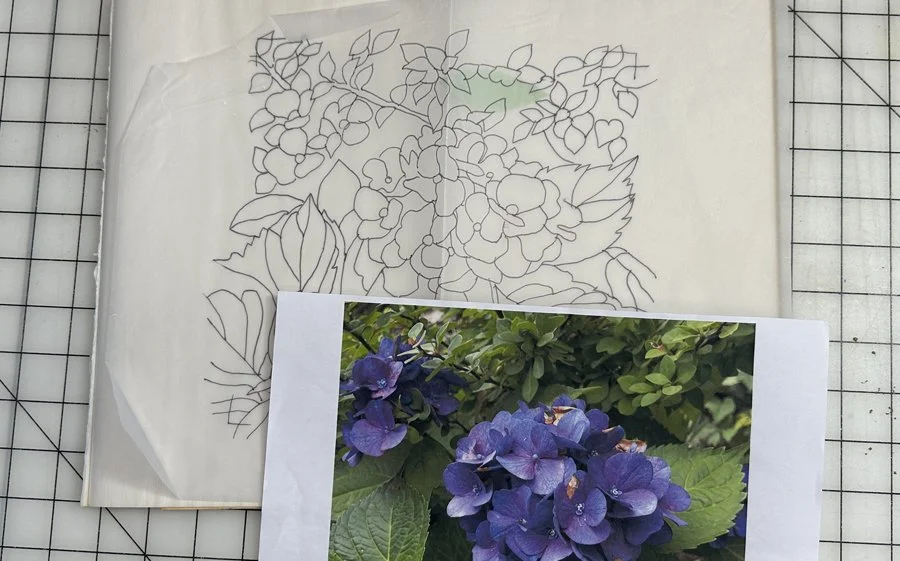
plastic nature APPLIQUÉ
Need a creative way to help clean up our planet? come Make art from soft single-use plastic bags and packaging. In this course I will show you, step by step, how you too can make art inspired by nature from the single-use plastic you have gathered.
What you’ll get
-
🌸
Guidance on choosing just right kinds of single-use plastics to achieve your vision
-
🌼
Advice for making the best floral composition possible
-
🌺
Best tools for easier cutting of plastic
-
🍁
Tips for free-motion stitching and thread painting nature
-
🌵
Hints for hand stitching and adding decorative touches
-
🌿
Pointers for tried and tested finishing techniques
What’s inside
chapter 4
Lesson 1 - This lesson focuses on thread painting, offering guidance on selecting patterns, tips for free-motion stitching, and encouragement to experiment.
Lesson 2 - This lesson discusses hand stitching, focusing on deciding when it’s needed and selecting suitable stitch types.
chapter 1
Lesson 1 - This lesson explores the endless creative possibilities of single-use plastic, encouraging readers to collect materials from various sources.
Lesson 2 - This lesson discusses using personal photos as a starting point for creating art, focusing on selecting and adjusting images to refine their composition with tools like Photoshop Elements.
Lesson 3 - This lesson outlines the materials and tools needed to create a nature-inspired artwork, including single-use plastic materials and sturdy substrates.
chapter 2
Lesson 1 - This lesson talks about editing and finalizing your initial composition. Best practices for making a sketch, and finalizing your stitching guide.
Lesson 2 - This lesson focuses on making wise decisions to achieve the best colors using available resources. It emphasizes creative flexibility, encouraging artists to deviate from photo references and adapt to what they have.
chapter 3
Lesson 1 - This lesson covers stitching your first lines, including selecting a thread color for outlining, stitching techniques, and tips for removing tracing paper effectively.
Lesson 2 - This lesson provides tips for cutting away layers of plastic using the reverse appliqué technique, emphasizing careful editing and patience throughout the process.
chapter 5
Lesson 1 - This lesson explores favorite finishing techniques for working with unusual materials, offering options like gluing to canvas or cradled board, trimming, painting edges, wrapping and stapling, or finishing quilt-style.
FAQs
How can I safely clean and prepare plastic for stitched art projects?
Only minimal cleaning is usually required. Plastic that used to hold food items, just needs a quick rinse. I usually turn the bags inside out, give them a hot water rinse and set aside to air dry. Items that help messy food items may need a soapy sponge, then a rinse and air dry. Plastic that held dry goods usually only needs a good shake off, unless there’s dust that would probably need to be rinsed.
How do you ensure the durability and longevity of art pieces made from plastic?
The key to keeping them in great shape is very similar to other art. Keep out of direct sunlight. Keep clean, dust or wipe off as necessary. Store with care, stack your art on canvas or cradle board flat against one another, face to face, against a flat, stable surface like a wall. Place a large piece of simple cloth, like a muslin or undyed cotton, or a large plain sheet of paper between the two surfaces. It’s best to have the art lifted off the ground as well, in case of spillage or flooding. That’s it!
What basic sewing techniques are essential for beginners?
For machine stitching it is important to know your machine. You'll need a very basic sewing machine, no bells and whistles required. Your machine needs to do a straight stitch, and have the ability to put down the feed dogs. Practice some basic stitching on a piece of cloth just so you know how your machine works.
For hand stitching all you need to know is how to do a running stitch and a seed stitch. Both are very basic techniques, one stitch at a time. There is a video in this course teaching you how to do it.







